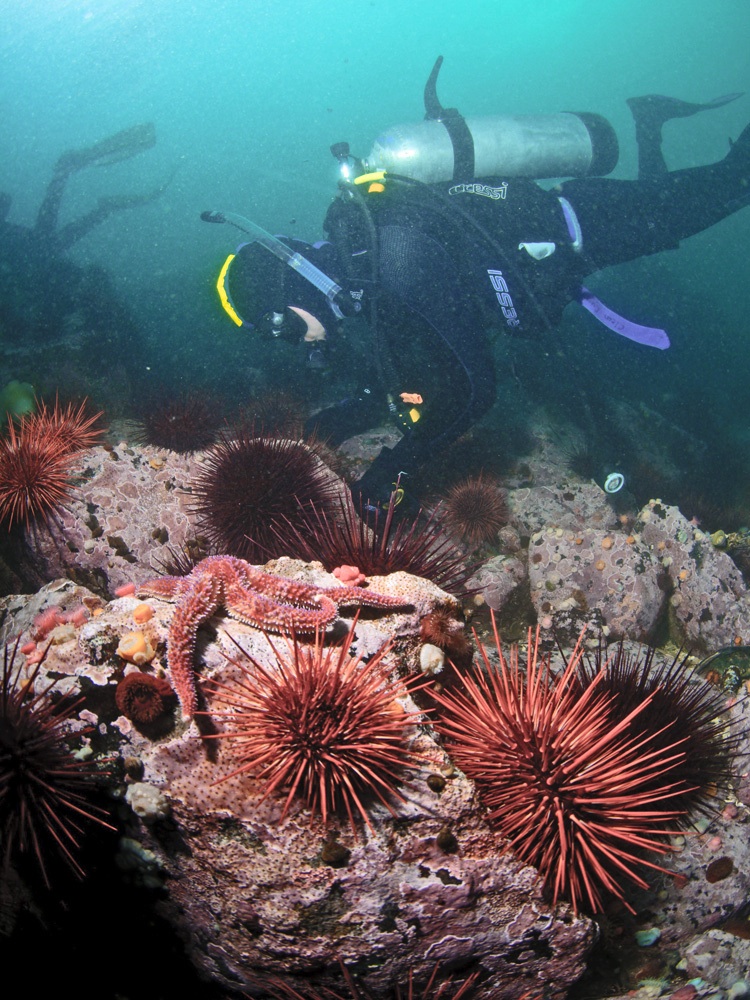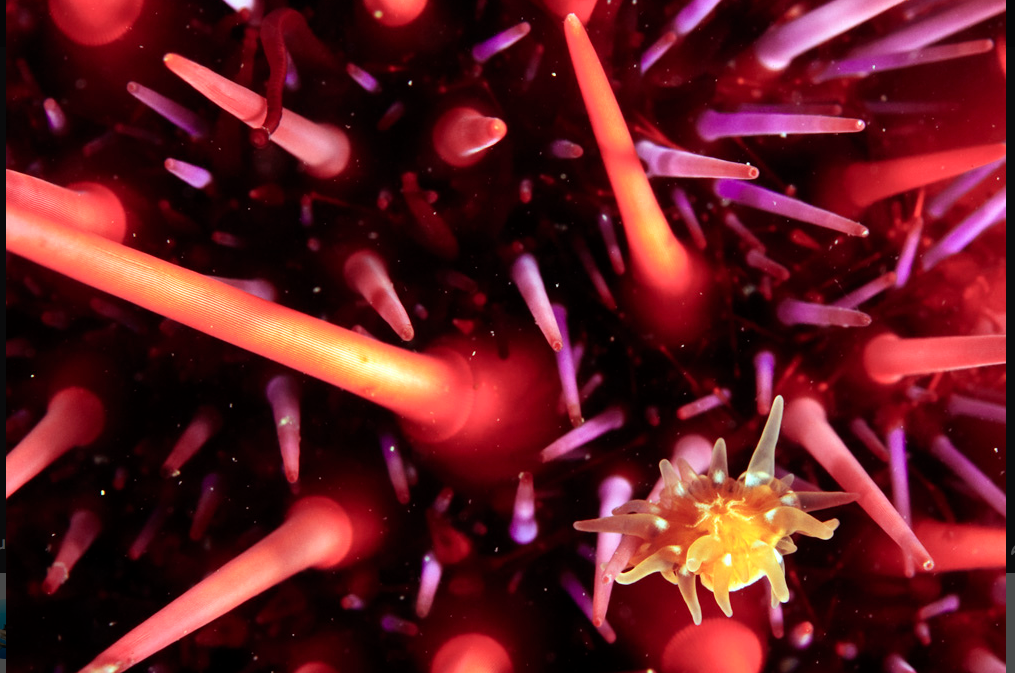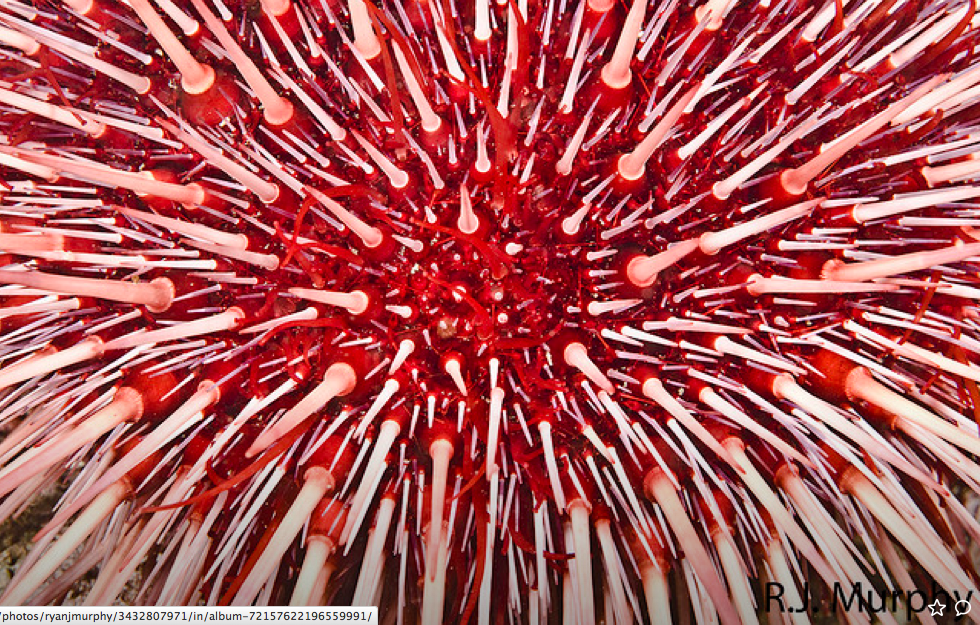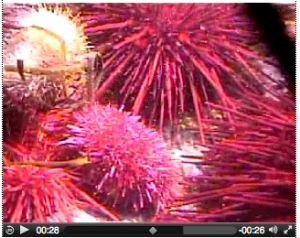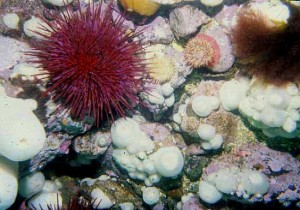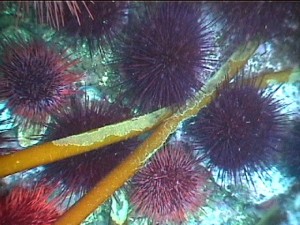From the underwater albums of Ryan Murphy- photographed when he was an Ecoguardian at Race Rocks.
https://www.flickr.com/photos/ryanjmurphy/sets/72157622196559991
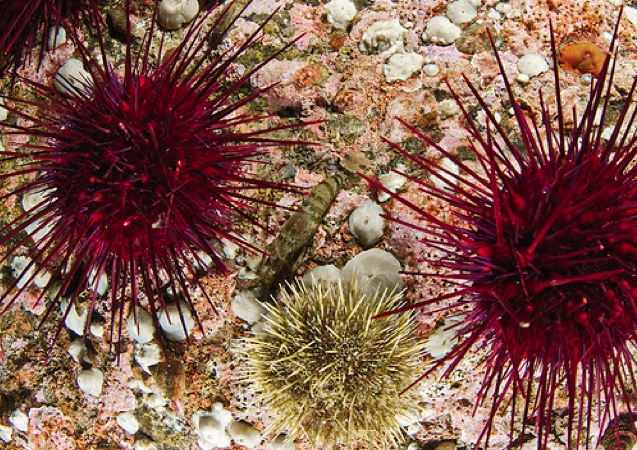
Giant red urchin Strongylocentrotus fransciscanus and Green urchin Strongylocentrotus droebachiensis
Usually, they eat red or brown algae (see in the photograph they have eaten pieces of the kelp Nereocystis), periwinkles, and occasionally barnacles or mussels.
Distribution; rocky areas though at exposed and protected coastal waters.
Habitat: Rocky substrates, especially ledges and crevices located near bull kelp beds and other brown algae in area of moderate to swift currents. Larvae drift and feed in plankton, juveniles settle near kelp bed, often associate with aggregation of adults, remain under adult spines until they reach 40mm.
Behavior: The red sea urchin is found in deeper water than the purple sea urchin. It is seen from the low intertidal area to as deep as 90 meters. The urchins move their feet by a hydraulic system which creates suction in the end of the food by pulling water out the madroporite. These tube feet may also be used to sense of smell the chemicals in their surroundings like others urchins, the red sea urchin can regrow its spines if they are broken. On full size urchins, these spines sometimes shelter small juveniles.
Reproduction: The spawning of red sea urchin peaks between, June and September in southern BC. The fertilized eggs develop into planktonic larvae before settling on the bottom where they change into tiny juvenile sea urchins. This replenishment of the population, appears to occur annually in local waters. New recruits must hide from potential predators and many seek shelter under the spines of adult . Adulthood is at approx. 3cm diameter and legal size of 10cm is reached in five to ten years. Life span sometimes exceeds 30 years.
People eat the gonads (sexual organs, called “UNI”) of this urchin. It is especially a delicacy in Japan and others parts of Asia. Sunflower stars, some fish, birds, and sea otters also prey on them.
This pdf is on the DFO Integrated Fisheries management Plan for the Red urchin:
DFO-red_urchin_2011-12 “The purpose of this Integrated Fisheries Management Plan (IFMP) is to identify the main objectives and requirements for the Red Sea Urchin fishery in the Pacific Region, as well as the management measures that will be used to achieve these objectives. This document also serves to communicate the basic information on the fishery and its management to Fisheries and Oceans Canada (DFO) staff, legislated co-management boards and other stakeholders. This IFMP provides a common understanding of the basic “rules” for the sustainable management of the fisheries resource.”
Scientific classification
Kingdom: Animalia
Phylum: Echinodermata
Class: Echinoidea
Order: Echinoida
Family: Strongylocentrotidae
Genus: Strongylocentrotus
Species: S. franciscanus
Other Members of the Phylum Echinodermata at Race Rocks.
and Image File |
 The Race Rocks taxonomy is a collaborative venture originally started with the Biology and Environmental Systems students of Lester Pearson College UWC. It now also has contributions added by Faculty, Staff, Volunteers and Observers on the remote control webcams. Original arrangement was by Ainhoa Orensanz PC Year 28, Feb 2002 The Race Rocks taxonomy is a collaborative venture originally started with the Biology and Environmental Systems students of Lester Pearson College UWC. It now also has contributions added by Faculty, Staff, Volunteers and Observers on the remote control webcams. Original arrangement was by Ainhoa Orensanz PC Year 28, Feb 2002 |

